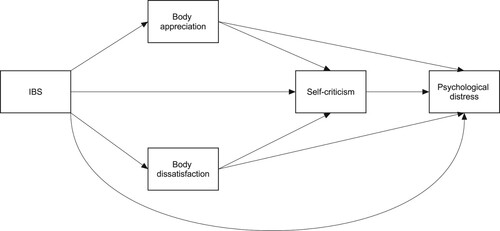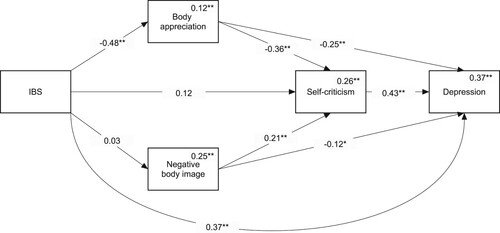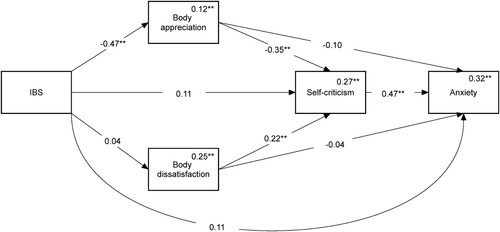Figures & data
Figure 1. Hypothesized model.

Table 1. Sample demographics and group comparison.
Table 2. Pearson correlations between the main study variables.
Table 3. Group comparison in the main study variables.
Table 4. Correlations or differences between sample demographics the outcome variables.
Figure 2. Mediation model predicting depression. Numbers on the lines are standardized path coefficients. Numbers above the variables’ names are multiple squared correlations. While not presented on this graph, age, gender, and BMI were included as covariates in this model. * p < 0.05, ** p < 0.01.

Figure 3. Mediation model predicting anxiety. Numbers on the lines are standardized path coefficients. Numbers above the variables’ names are multiple squared correlations. While not presented on this graph, age, gender, relationship status and BMI were included as covariates in this model. ** p < 0.01.

Data availability statement
The data that support the findings of this study are available on request from the corresponding author. The data are not publicly available due to restrictions, e.g. their containing information that could compromise the privacy of research participants.
